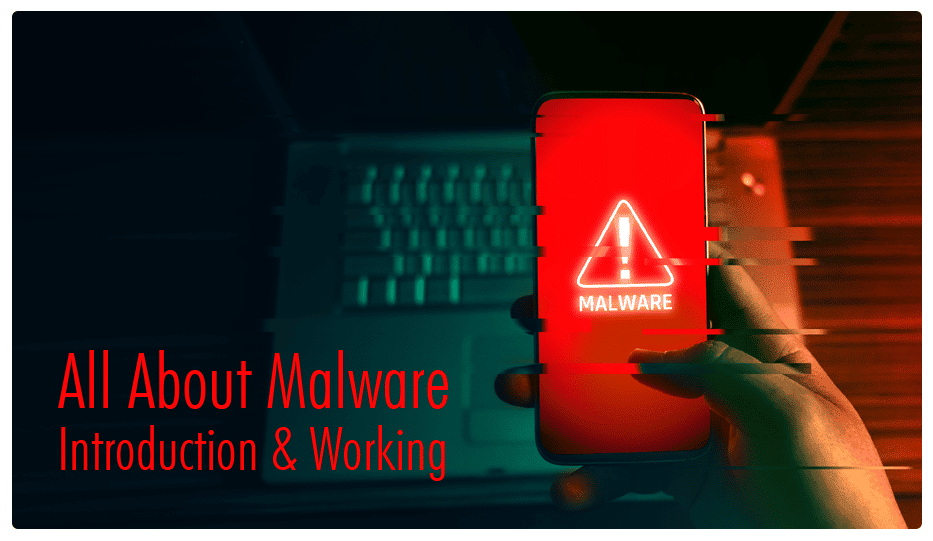
All About Malware – Introduction & Working
This is Part One of the Three Part Series of Malware Blogs.
Malware — short for MALicious softWARE — is a running piece of code that is written with the intent to harm your machine. The bad news is that it is evolving with time. Cyber criminals are updating their own knowledge continuously as technology advances. The good news, as always, is that there are certain preventive measures you can take to protect yourself. This blog series will walk you through the types of malware attacks, how they are perpetrated and what you can do to protect yourself against them.
What is a malware attack?
A malware is a destructive module of code that runs on your machine without your knowledge.
Some typical functions of malware:
• Theft, encryption or removal of sensitive data
• Modifying key background processes
• Shifting control from core computing functions
• Monitoring users’ computer activity without their permission
The distinctive characteristic of a malware is its ability to run on its own accord, seldom needing
to piggyback on other legitimate software (except in the case of a virus).
Often this malicious code is associated with a trigger that sets it off, after which it starts doing
damage to your system. In a nutshell, the main motivation behind launching a malware attack is
for monetary gain; hence, even individuals are at risk and not only giant organizations.
Working of a malware
The main challenge malware coders face is causing maximum damage by spreading the
malware to multiple devices.
Most common avenues exploited by hackers:
• USB connections
• Auto-downloads on the internet triggered without your consent
• Damaging links or attachments in email
• Hidden code behind seemingly legitimate files
As we discussed before, black hat hackers have left no stone unturned when it comes to keeping
up with the technology. Mobile malware is an increasingly dangerous emerging trend, making
every mobile device a potential target.
Rather than theft of data, the intent of this type of attack is to gain background access to
a mobile device’s location, mic or even camera. This access is then used to steal sensitive
information.
Whichever system it targets, a malware exploits the system registry settings and internal
structure to hide from detection. Without a keen eye, sometimes the only way to realize you’ve
been attacked is by seeing the aftermath of the attack, by which time it is too late.
In the next blog in this series, we will cover the types of malware, and their specific area of focus.
Be on the lookout for the Part Two, coming soon!
This the end Part One of the Three Part Series of Malware Blogs.
Meanwhile, you can browse through the services we offer for your security.
Organizations today are faced with growing complexities everywhere from continuously
evolving automated targeted cyber threats on the network, applications & programs to keeping
abreast with the most current security patch updates. Your Cybersecurity should evolve
accordingly with constant patch updates, regular VAPT checks, round the clock network health
check
Logix since 1999, is a committed and acknowledged provider of managed services, solutions
and products in the Cybersecurity space with a dedicated team of nearly 20+ professionals
supporting Business enterprises across PAN India from Banks, Government entities to Financial
Institutions. With a strong focus on research and innovation, we have built extensive capability
around Big Data for Security Analytics, Response, and Security Automation.
Our prime focus lies in managing & deploying NGFW solutions of multiple OEMs. We manage
over 1500 + SMB/Mid-Enterprise / Enterprise Customers, providing constant monitoring &
handhold support 24*7*365.
Find more details here.